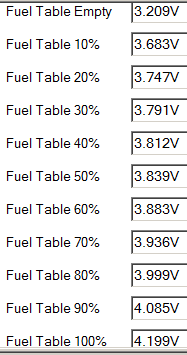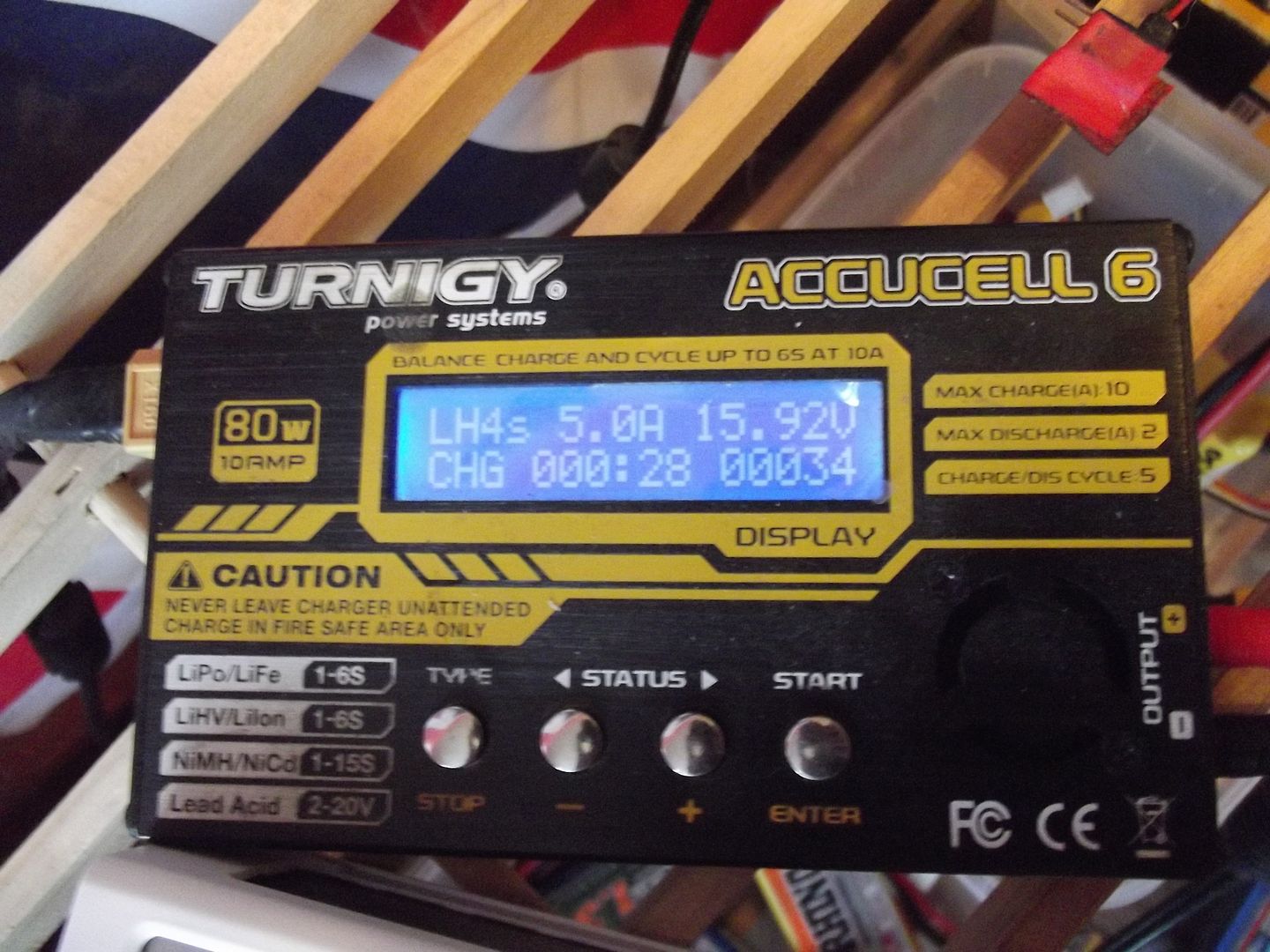I'm still confused. P3S I fly very infrequently. When I do it's usually only for 5 to 15 minutes. I have less then 20 total flights/ cycles. After flying, it might be 2 to 3 weeks or more before I fly again. What should I do about storing/ charging the battery. I read you shouldn't start a new flight unless batteries are fully charged. I have been putting the battery on the charger the day before I intend to fly. Also when and do I need to discharge the battery or do I? Thanks. The manual wasn't to informative....
You are using an out of date browser. It may not display this or other websites correctly.
You should upgrade or use an alternative browser.
You should upgrade or use an alternative browser.
Another battery question
- Thread starter grpass
- Start date
Fully charging the day before is fine...and , yes, you should always start with a full battery. Lipo batteries should be stored at around 50%, so if your battery is down to 20% for example when you finish flying, put it on the charger until the third light starts to blink, and then turn it off.
If you have a fully charged battery, and for some reason you don't get to fly, it will automatically discharge to a safe storage level after a set period of time. You have settings in the GO app to tell it when to start discharging ...anything from 1 to 10 days. Once it's started discharging, don't press the on button to "see how it's getting on", as that will reset the timer, and it will wait for another 1 to 10 days before it starts discharging again.
If you have a fully charged battery, and for some reason you don't get to fly, it will automatically discharge to a safe storage level after a set period of time. You have settings in the GO app to tell it when to start discharging ...anything from 1 to 10 days. Once it's started discharging, don't press the on button to "see how it's getting on", as that will reset the timer, and it will wait for another 1 to 10 days before it starts discharging again.
OK ... lets put this to bed .... the matter of storage charge level is a heavily debated and time worn subject.
ALL model LiPo's of 4.2 and 4.35V format (Standard and HV) - the recc'd storage level is from 3.7 to 3.85V. This equates to anywhere from about 25% up to 50% charge level.
There is no need to charge up to 50% if battery is down in the 20 - 30's % level after flight.
Ok ... GO app has a section for owners to decide on discharge timing of the batterys. It can be set from 1 to 10 days ... This means that the battery if at higher than storage charge is left quiet - AFTER the set number of days will start to slowly discharge to the DJI stated level of 'below 65%' ... once it gets to that - discharge will slow down to a trickle (from full it can take 2 days or more) ... and eventually reach below 50% and enter hibernation mode if left for significant period.
The OP says he flies for 5 - 15mins ... that means then he ranges from probably 85% to 40% left in his batterys ...
There is no problem with him to put batterys away liked that. The 85% ones (5 min flights) will auto discharge to storage. The 40% (15min) ones are fine at that level for storage.
Personally 10 days before autio discharge is far too long and with LiPo's damage is accumulative. Therefore each 10 days they sit full or high charged causes deterioration of battery cells with increased Internal Resistance. Better to set for maximum 3 days - I actually have it set at 1 day.
Charging night before is fine for next days flying.
For anyone who wants to have greater control over their batterys ... there's the TELSIN battery dischargers on Ebay that are designed specifically for DJI P3 batterys ...
The beauty of these is that they can discharge a P3 battery but use the energy to charge up or power any USB style item ... such as your Mobile Phone or even your Controller !
Nigel
ALL model LiPo's of 4.2 and 4.35V format (Standard and HV) - the recc'd storage level is from 3.7 to 3.85V. This equates to anywhere from about 25% up to 50% charge level.
There is no need to charge up to 50% if battery is down in the 20 - 30's % level after flight.
Ok ... GO app has a section for owners to decide on discharge timing of the batterys. It can be set from 1 to 10 days ... This means that the battery if at higher than storage charge is left quiet - AFTER the set number of days will start to slowly discharge to the DJI stated level of 'below 65%' ... once it gets to that - discharge will slow down to a trickle (from full it can take 2 days or more) ... and eventually reach below 50% and enter hibernation mode if left for significant period.
The OP says he flies for 5 - 15mins ... that means then he ranges from probably 85% to 40% left in his batterys ...
There is no problem with him to put batterys away liked that. The 85% ones (5 min flights) will auto discharge to storage. The 40% (15min) ones are fine at that level for storage.
Personally 10 days before autio discharge is far too long and with LiPo's damage is accumulative. Therefore each 10 days they sit full or high charged causes deterioration of battery cells with increased Internal Resistance. Better to set for maximum 3 days - I actually have it set at 1 day.
Charging night before is fine for next days flying.
For anyone who wants to have greater control over their batterys ... there's the TELSIN battery dischargers on Ebay that are designed specifically for DJI P3 batterys ...
The beauty of these is that they can discharge a P3 battery but use the energy to charge up or power any USB style item ... such as your Mobile Phone or even your Controller !
Nigel
That sounds like a useful gadget!
Thanks for this reply as I was going ask a similar question.
My first flight I only got down to ~45% so left it, second flight it got all the way down to 10% and I charged it back up to ~45% again as I thought leaving it too low wouldn't be good
Thanks for this reply as I was going ask a similar question.
My first flight I only got down to ~45% so left it, second flight it got all the way down to 10% and I charged it back up to ~45% again as I thought leaving it too low wouldn't be good

Now back to the recc'd Storage figures of 3.7 to 3.85V ..... you can ignore the higher figures in the table because the DJI P3 battery is a HV version with 4.35V max charge level. That extra actually only affects the about the first 10% of power use and then the battery acts same as a regular LiPo .. and we are only interested really in the storage range.
So using the table - you can see if your LiPo is in the safe Storage range. At 10% left after flight ... this is a touch low and a touch of charge to bring it up a bit is advised.
With the DJI charger - its guess work !! Its what is termed a Dumb Brick Power block ... because there is no indication at all of its amps / status etc.
So I advocate use of a more common LiPo programmable charger such as the B6 Mini or Accucel 6 80W ... these give full display of info during charge / storage mode ... have battery metering etc.

With such you could then connect up and watch the voltage reading direct ... and stop charge at any point you decide and KNOW what level the battery is at. All you have to do is divide the total voltage shown on the charger by 4 to compare with the table here.
Nigel
I have a Celectra 1-3 cell Lipo battery charger from my RC days and it's too bad it wont work on these batteries.
Most of the older LiPo chargers are not suitable as you need LiPo High Voltage capability and for 4 cell. Commonly referred to as LiHV.
But the good news is that such as the Accucel 6 80W charger + a power supply and adaptor lead comes out as less cost than the cheapest DJI charger. This will charge literally any battery you have around the house including even your Cars lead acid. In fact even the DJI charger brick could be used to power the Accucel ... just a matter of creating an adaptor to plug it in.
For anyone looking at a LiPo charger - I do not recc'd those with built in Mains Power ... because the rating of the power supply is usually maxed out. Its much better to have a DC only charger and separate power supply.
Nigel
Similar threads
- Replies
- 24
- Views
- 3K
- Replies
- 2
- Views
- 1K







